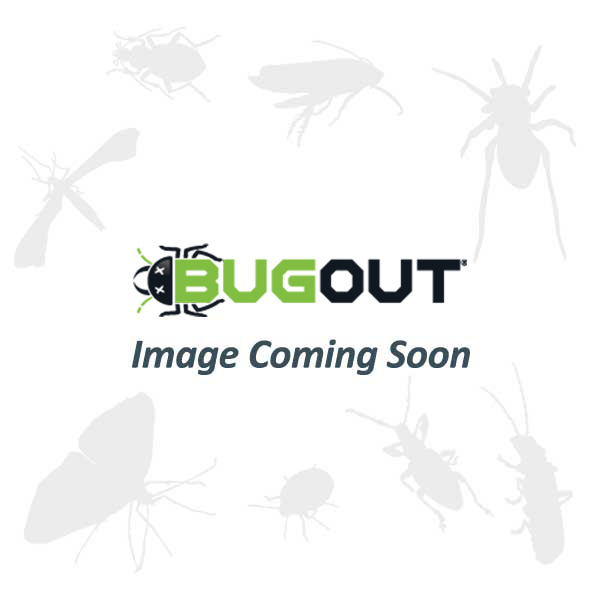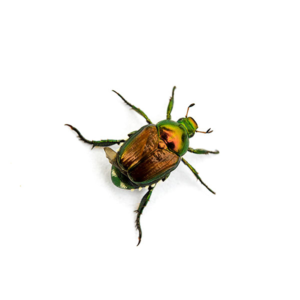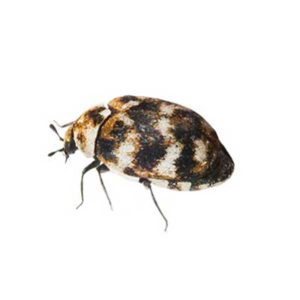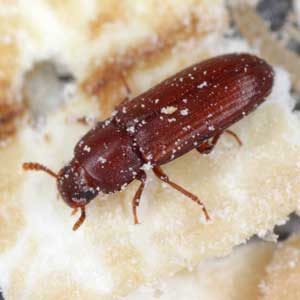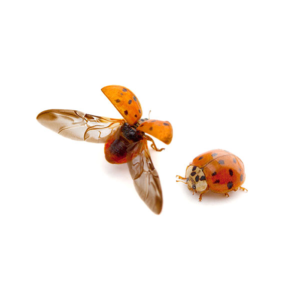Elm Leaf Beetles in North Carolina
Several types of beetles damage elm leaves, but one invasive pest is a severe threat to elm trees. Found throughout the United States and Canada, Elm leaf beetles are common insects that chew the leaves of elm trees, especially favoring Siberian and English elms. Adult elm leaf beetles chew holes in elm leaves and larvae feed on the leaf surface, producing injuries that make leaves look lacy. Elm leaf beetles often spend winter in and around buildings and can be an important nuisance pest in homes, as they often enter attics, crawlspaces, and living areas seeking winter shelter.
Because there are many different types of beetles in North Carolina, they can be difficult to distinguish, however our common beetles species can help with this.
Elm Leaf Beetle Habitat
Adult elm leaf beetles overwinter in protected locations, often in houses or other structures. In homes, they find protective locations to overwinter, like attics and crawl spaces, and then emerge in the spring. Adults move to elm trees where they lay their eggs in groups of 5 to 25 on the underside of leaves. Elm leaf beetles feed upon all elms, and larvae skeletonize the leaf surface, causing damaged foliage to turn brown to whitish. Elm leaf beetles, when abundant, can entirely defoliate large elm trees, which eliminates summer shade and reduces the aesthetic value of trees.
Elm Leaf Carpet Beetle Behaviors, Threats, or Dangers
Elm leaf beetles are nuisance pests as they do not bite or sting and they do not reproduce or feed indoors during the winter. They do not harm people or the wooden components found in homes. The effects of beetles feeding on trees can greatly affect the appearance of elms, rendering them unsightly, and can reduce growth and weaken them, particularly when large beetle populations persist for several years. If beetles are observed in the autumn as they approach the house, it’s wise to contact a pest management professional for licensed treatment and beetle control.
Elm Leaf Beetle Habitat
Adult elm leaf beetles overwinter in protected locations, often in houses or other structures. In homes, they find protective locations to overwinter, like attics and crawl spaces, and then emerge in the spring. Adults move to elm trees where they lay their eggs in groups of 5 to 25 on the underside of leaves. Elm leaf beetles feed upon all elms, and larvae skeletonize the leaf surface, causing damaged foliage to turn brown to whitish. Elm leaf beetles, when abundant, can entirely defoliate large elm trees, which eliminates summer shade and reduces the aesthetic value of trees.
Elm Leaf Carpet Beetle Behaviors, Threats, or Dangers
Elm leaf beetles are nuisance pests as they do not bite or sting and they do not reproduce or feed indoors during the winter. They do not harm people or the wooden components found in homes. The effects of beetles feeding on trees can greatly affect the appearance of elms, rendering them unsightly, and can reduce growth and weaken them, particularly when large beetle populations persist for several years. If beetles are observed in the autumn as they approach the house, it’s wise to contact a pest management professional for licensed treatment and beetle control.
What Attracts Elm Leaf Beetles?
Elm leaf beetles are primarily attracted to Elm Trees, where they feed and reproduce. The presence of Siberian and English Elms in particular can increase the likelihood of infestation. These beetles are also drawn to warm, protected indoor areas while remaining in a dormant state during the Winter.
What Are The Signs of Elm Leaf Beetles?
The signs of an Elm Leaf Beetle infestation include the appearance of small, yellow to olive-green beetles, often with black stripes on their back. In Elm Trees, look for leaves with chewed holes and a lacy appearance. Indoors, these beetles may be found in large numbers in attics, crawl spaces, and occasionally in living areas.
How to Get Rid of Elm Leaf Bugs?
Effective Elm Leaf Beetle control involves a combination of methods. Keeping Elm Trees healthy and promptly removing any diseased or damaged limbs can reduce beetle populations. Chemical treatments, particularly for larger trees or severe infestations, may be necessary and should be applied by a professional.
Need help with Elm Leaf Beetle control?
Frequently Asked Questions
How do you Get Rid of Elm Leaf Beetles?
To get rid of Elm Leaf Beetles, a combination of methods can be used:
- Maintain the health of the Elm Trees through proper watering, mulching, and fertilizing. Healthy trees are less susceptible to severe damage.
- During the Winter, remove and destroy any debris around the tree where beetles might be in a dormant state. You can also hand-pick beetles and larvae or shake them off young trees into a bucket of soapy water.
- Insecticides can be effective, especially if applied when larvae are young. Systemic insecticides, which are absorbed by the tree and distributed throughout its tissue, can be particularly effective. It’s essential to follow label instructions and possibly consult a professional beetle control expert, especially for larger trees.
What Attracts Elm Leaf Beetles?
Elm Leaf Beetles are primarily attracted to Elm Trees, as they are their primary food source. They are drawn to trees in stress or decline, as these trees are easier to feed on and lay eggs. Factors that can stress Elm Trees and make them more attractive to beetles include drought, poor soil conditions, and previous damage from pests or diseases.
What are the Signs of Elm Leaf Beetles?
The signs of Elm Leaf Beetle infestation include:
- Visible Damage to Leaves: The larvae feed on the leaf surface, creating a “shot-hole” appearance or skeletonizing the leaves. This damage can lead to brown, dried-out leaves and premature leaf drop.
- Beetles on Trees: Adult beetles are small (about 1/4 inch long), yellow to olive green, with a darker stripe on each wing cover. You might see them on the tree or around it.
- Larvae and Pupae: Larvae are yellow to black and about 1/2 inch long. You might also find pupae, which are the stage between larvae and adults, attached to leaves or in crevices in the tree bark.
- Egg Clusters: The female beetles lay eggs in clusters on the underside of leaves. These eggs are yellow and can hatch into larvae, which start feeding on the leaves.

